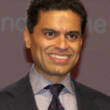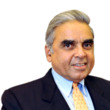How to Run the World: Charting a Course to the Next Renaissance
(Libby/OverDrive eAudiobook)
Available Platforms
Description
More Details
Also in this Series
Published Reviews
Booklist Review
If only the rest of this book were as lively and succinct as the title is. Instead, Khanna's strong main point that the problems of a decentralized, post-cold war world demand far more creative solutions than they've received loses its way in the author's discursive and, frankly, often boring text. Still, for readers willing to make the slog, they'll find much value here: for example, a delineation of the new global political players, an explanation of failed states (those in name and on maps only), and an understanding of the interconnectivity needed to solve the world's most pressing problems. As the author has appeared on CNN and in such publications as the New York Times, expect some author exposure in electronic and print media.--Moores, Alan Copyright 2010 Booklist
Publisher's Weekly Review
The "American Century" is over. According to Khanna (The Second World), "we are in for a fractured, fragmented, multi-polar" world, a new Middle Ages of decentralized power where "corporations, powerful families, humanitarians, religious radicals, universities, and mercenaries are all part of the diplomatic landscape." In a world of "mega-diplomacy," efficient remedies to global poverty, environmental crisis, and genocidal threats will require fresh combinations of governments, NGOs, and corporations that can marshal "global resources to solve local problems." His book is an excellent introduction to worthy organizations tackling social and political problems, but in going for a panoramic sweep and trying to cover so many topics, the analysis deals with none in depth. Case studies rarely pass the two-page mark, and Khanna drowns the reader in data stripped of context and resonance. His vaunting of celebrity activists feels callow, and his championing of online petition sites is premature-the real efficacy of such methods is still in question. Khanna writes clearly, with conviction and charm, and his neomedieval metaphor is so intriguing that readers will regret Khanna's decision to stay in the shallows. (Jan.) (c) Copyright PWxyz, LLC. All rights reserved.
Kirkus Book Review
New America Foundation senior research fellow Khanna (The Second World: Empires and Influence in the New Global Order, 2008) calls for a new "mega-diplomacy" to solve problems in a period of global uncertainty.Diplomats have long negotiated how to run the world, writes the author. In ancient Sumerian city-states, they channeled the messages of deities among kings. In modern times, they have divvied up the globe after major wars. With no single power in control, today's "fractured, fragmented, ungovernable" postCold War world demands a new kind of diplomacy based on coalitions of governments, corporations and civic actors. Empowered by the information revolution, writes Khanna, public and private partners can collaborate efficiently across national borders to meet such 21st-century challenges as terrorism, the AIDS epidemic and climate change. Key practitioners of this new diplomacy include the entrepreneurs, academics, activists, celebrities and others who have worked in unusual and collaborative ways to achieve such goals as a landmine ban, debt relief and the International Criminal Court. They range from Bill and Melinda Gates to luminaries like Bono and Angelina Jolieall individuals with resources and influenceand include NGOs like the Open Society Institute, which shapes important global questions; the World Economic Forum, "archetype of the new diplomacy," which brings diverse players together on equal footing at annual summits; and the Clinton Global Initiative, which fosters cross-sector partnerships among leaders in politics, business and civil society. Khanna suggests ways in which the new diplomacy can help spur fresh approaches in problem areasencouraging greater intelligence cooperation on terrorism among countries, giving Somali fishermen incentives to not engage in piracy (such as new boats to boost their catch) and convincing regimes in Iran and North Korea that they don't need nuclear programs. In the environmental arena, meaningful public-private initiatives spurred by the new diplomacy can have far more impact than international agreements, he writes. For a model of mega-diplomacy, the author points to Europe, where members of the borderless European Union are experimenting and cooperating to meet shared challenges.A valuable contribution to the global-governance debate.]] Copyright Kirkus Reviews, used with permission.
Booklist Reviews
If only the rest of this book were as lively and succinct as the title is. Instead, Khanna's strong main point—that the problems of a decentralized, post–cold war world demand far more creative solutions than they've received—loses its way in the author's discursive and, frankly, often boring text. Still, for readers willing to make the slog, they'll find much value here: for example, a delineation of the new global political players, an explanation of failed states (those in name and on maps only), and an understanding of the interconnectivity needed to solve the world's most pressing problems. As the author has appeared on CNN and in such publications as the New York Times, expect some author exposure in electronic and print media. Copyright 2010 Booklist Reviews.
Publishers Weekly Reviews
The "American Century" is over. According to Khanna (The Second World), "we are in for a fractured, fragmented, multi-polar" world, a new Middle Ages of decentralized power where "corporations, powerful families, humanitarians, religious radicals, universities, and mercenaries are all part of the diplomatic landscape." In a world of "mega-diplomacy," efficient remedies to global poverty, environmental crisis, and genocidal threats will require fresh combinations of governments, NGOs, and corporations that can marshal "global resources to solve local problems." His book is an excellent introduction to worthy organizations tackling social and political problems, but in going for a panoramic sweep and trying to cover so many topics, the analysis deals with none in depth. Case studies rarely pass the two-page mark, and Khanna drowns the reader in data stripped of context and resonance. His vaunting of celebrity activists feels callow, and his championing of online petition sites is premature--the real efficacy of such methods is still in question. Khanna writes clearly, with conviction and charm, and his neomedieval metaphor is so intriguing that readers will regret Khanna's decision to stay in the shallows. (Jan.)
[Page ]. Copyright 2010 PWxyz LLCReviews from GoodReads
Citations
Khanna, P., & Meskimen, J. (2011). How to Run the World: Charting a Course to the Next Renaissance (Unabridged). Books on Tape.
Chicago / Turabian - Author Date Citation, 17th Edition (style guide)Khanna, Parag and Jim Meskimen. 2011. How to Run the World: Charting a Course to the Next Renaissance. Books on Tape.
Chicago / Turabian - Humanities (Notes and Bibliography) Citation, 17th Edition (style guide)Khanna, Parag and Jim Meskimen. How to Run the World: Charting a Course to the Next Renaissance Books on Tape, 2011.
Harvard Citation (style guide)Khanna, P. and Meskimen, J. (2011). How to run the world: charting a course to the next renaissance. Unabridged Books on Tape.
MLA Citation, 9th Edition (style guide)Khanna, Parag, and Jim Meskimen. How to Run the World: Charting a Course to the Next Renaissance Unabridged, Books on Tape, 2011.
Copy Details
| Collection | Owned | Available | Number of Holds |
|---|---|---|---|
| Libby | 1 | 1 | 0 |































